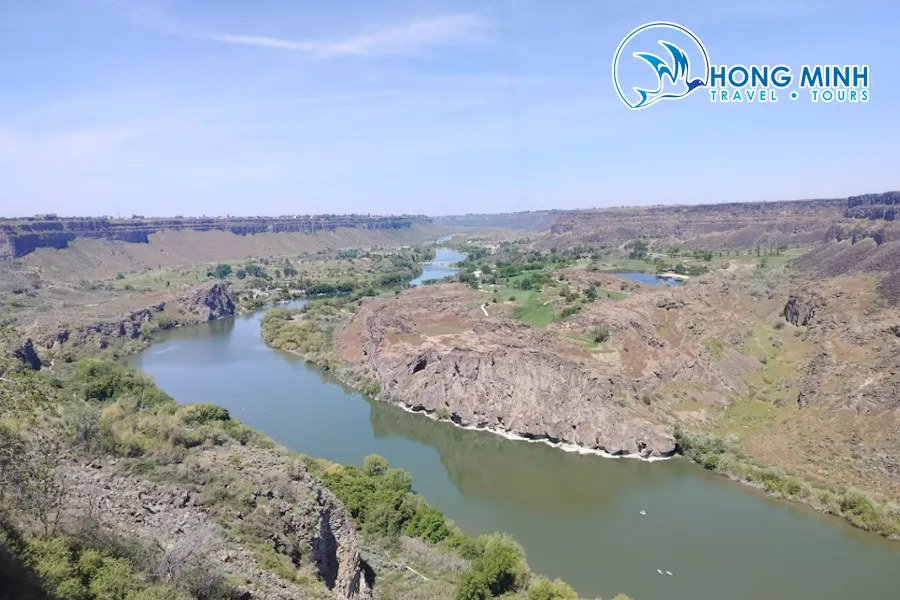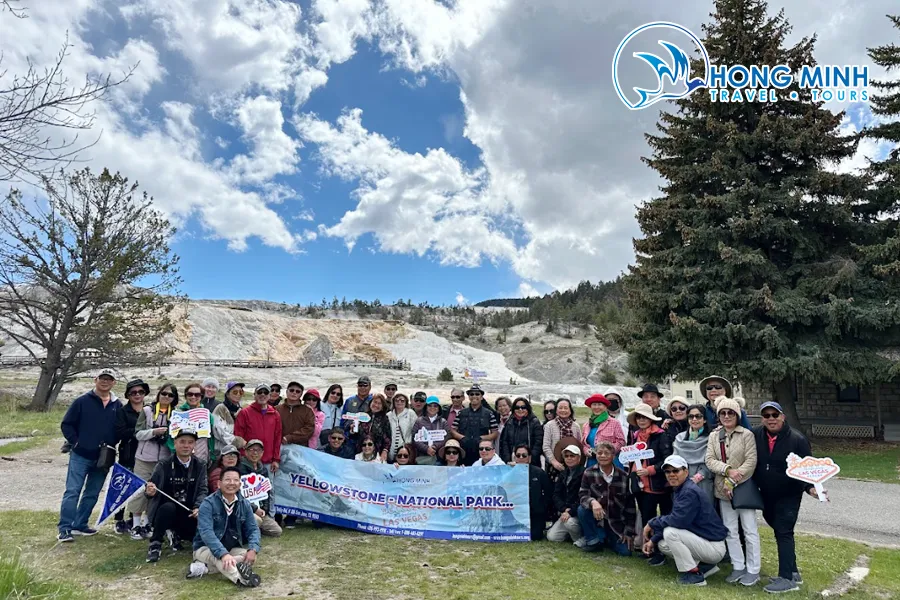Yellowstone, the world’s first national park, is not only renowned for its awe-inspiring geysers and the vibrant Grand Prismatic Spring, but also a wildlife haven home to numerous rare animals. Among them, the majestic and gigantic moose is a prime photography target for nature-loving photographers and visitors. Join “Travel the World” in an exciting and memorable journey to capture moose photography at Yellowstone National Park.
The Majestic Beauty of Yellowstone Moose
The moose is the largest member of the deer family, characterized by the impressive antlers of the males and their sturdy bodies. In Yellowstone, moose inhabit a diverse natural environment, from dense forests to vast grasslands and picturesque lakesides. They symbolize strength and wilderness, offering breathtaking moments to anyone fortunate enough to witness them.
To capture the most beautiful and authentic moose photographs, you need to understand their behavior. Moose are most active at dawn and dusk, when the soft light creates a perfect backdrop for photography. They prefer areas near water sources with abundant vegetation for feeding. In summer, you can easily spot moose around lakes, marshes, or riverbanks. During winter, they usually seek food in pine forests where the snow cover is not too thick.
Ideal Timing for Moose Photography
The best time to photograph moose in Yellowstone is during spring and fall. Spring (from April to June) is the mating season, where you might observe charming interactions between cow moose and their calves. Fall (from September to October) is the rutting season, when bull moose are at their peak with fully developed antlers, creating incredibly impressive images.
Summer (from July to August) is also an ideal time to visit Yellowstone, although moose tend to be less active during hot mid-day hours. However, you can still find them in early mornings or late afternoons. In winter (from November to March), Yellowstone is covered in snow, creating a romantic and unique landscape. Moose remain active during winter, but locating them can be more challenging.
Prime Moose Photography Locations in Yellowstone
Yellowstone covers a vast area, but some locations are known for abundant moose populations, increasing your chances of successful photography:
- Hayden Valley: Located in central Yellowstone, Hayden Valley is one of the best areas for observing wildlife, including moose. Its expansive grasslands and winding Yellowstone River provide an ideal habitat.
- Yellowstone Lake and Surrounding Areas: The shores of Yellowstone Lake and nearby areas like Fishing Bridge and Grant Village are frequent moose habitats, especially in early mornings and late afternoons.
- Mammoth Hot Springs: The Mammoth Hot Springs area in northern Yellowstone is another place where you might encounter moose, sometimes even within the town of Mammoth Hot Springs.
- Norris Geyser Basin Area: While famous for its geysers, Norris Geyser Basin also has small forests and meadows where moose may forage.
- Riverbanks and Streams: Moose prefer living near water, so pay attention to riverbanks and streams within the park. Snake River Canyon and Twin Falls mentioned in the original article are also worth considering when visiting Yellowstone.


Professional Tips for Moose Photography
To capture impressive and safe moose photographs, equip yourself with essential knowledge and skills:
- Equipment: A telephoto lens is essential for shooting wildlife from a distance. A lens with a focal length of 300mm or more will help you capture stunning moments without disturbing the moose. Cameras with continuous shooting capabilities and high ISO settings are also helpful in low light conditions.
- Technique: Use a large aperture (small f-number) to blur the background, highlighting the moose as the subject. Pay attention to shutter speed to avoid blurriness when shooting moving animals. Composition is crucial; try different angles for unique shots.
- Patience: Wildlife photography requires a lot of patience. Take time to observe and wait for the right moment. Don’t rush if you haven’t spotted a moose right away.
- Safety: Always maintain a safe distance from moose and other wildlife. Do not feed them or approach too closely, especially cow moose and calves. Use a telephoto lens to shoot from afar and respect their personal space.
- Respect Nature: Remember you’re in a wildlife habitat. Act responsibly, avoid making noise, don’t litter, and minimize your environmental impact.
Explore the Diverse Wildlife of Yellowstone
In addition to moose, Yellowstone is home to many other wildlife species such as grizzly bears, bison, gray wolves, elk, pronghorn antelope, and numerous rare bird species. Yellowstone Bear World, a wildlife park near Yellowstone mentioned in the original article, is also a fascinating destination to familiarize yourself with North American wildlife before embarking on a real Yellowstone adventure.

When visiting Yellowstone, you can combine moose photography with exploring other famous sites like the Old Faithful Geyser, the Grand Canyon of the Yellowstone, Yellowstone Lake, and its diverse hot springs. Each season in Yellowstone offers a unique charm, promising unforgettable experiences for visitors.

Conclusion
Capturing moose photography at Yellowstone National Park is an exciting and challenging journey, offering the chance to immerse yourself in the wild and capture unique moments. With thorough preparation in knowledge, skills, and equipment, you can create stunning and memorable moose photographs. Visit Yellowstone and explore the wild beauty of the world’s first national park, where majestic moose await you!